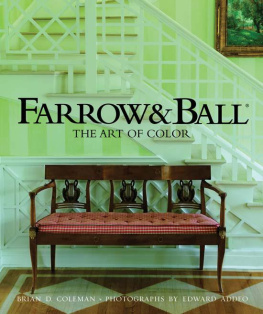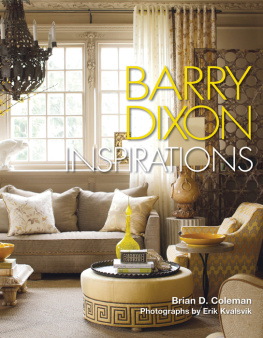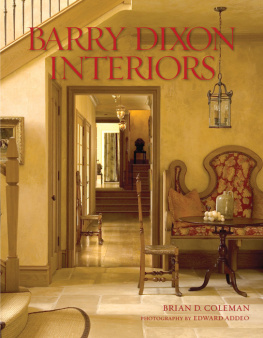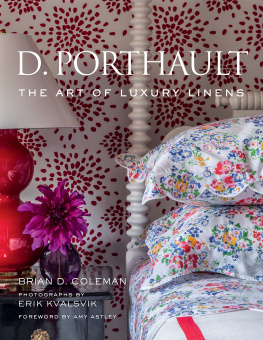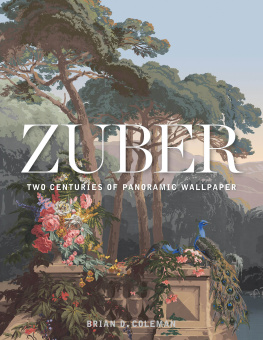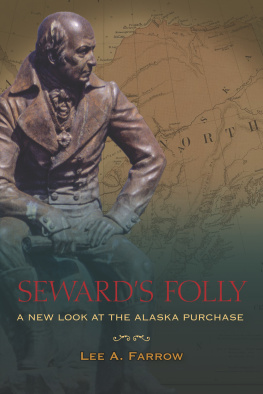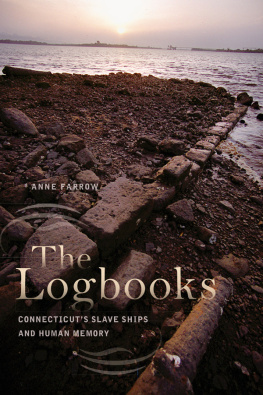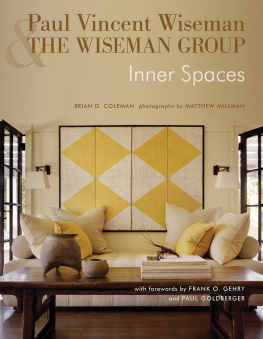Text 2007 Brian D. Coleman
All rights reserved. No part of this book may be reproduced by any means whatsoever without written permission from the publisher, except brief portions quoted for purpose of review.
1. Color in interior decorationUnited States. 2. Color decoration and ornamentUnited States. 3. Paint. 4. Farrow & Ball. I. Title.
Preface
In an age when manufacturers seem to think that in order to be commercially viable every product has to be labeled state of the art, cutting edge or at the very least new, the English paint company Farrow & Ball has become very successful, indeed, by rediscovering the past.
Farrow & Ball was founded in the 1930s by chemists John Farrow and Richard Ball. They set up business in Dorset, the county of that quintessential English writer Thomas Hardy, in the ancient town of Wimborne. There they made limewash, distemper and dead-flat oil paints, selling these products to a select band of country-house customers. The company continued along, unchanged, until the early 1990s, when it came into the hands of Tom Helme and Martin Ephson, who saw in it a potential undreamed of by its founders.
In 1990 Tom was working on a restoration project for the National Trust at an important eighteenth-century country house in Devon. He had been trying to duplicate a paint color, making up test pots, mixing colors, even making paint from scratch using dry pigment, but with little success. One day a decorator from a local firm turned up with some tins of Farrow & Ball paints, and to Toms amazement, there was the color that he had been working so hard to come up with, ready-made . Tom went to Wimborne, where he found a company that was, in his words, operating in something of a time warp, but which, nonetheless, was making high-quality products of a type Tom had thought unavailable commercially. Tom had stumbled on what he called an undiscovered gem, and he went back to the National Trust with the news that there was a paint manufacturer in Dorset that would make any color a restoration job might require.
The National Trust was so impressed that they joined forces with Farrow & Ball to launch a jointly branded range of paints. What they came up with soon found favor with decorators and a public anxious to get their hands on traditional, high-quality paints in time-honored colors that worked together.
Enter the other man in this story, Martin Ephson. Martin and Tom had been friends since schooldays. Tom told his friend about Farrow & Ball and in so doing also communicated the enthusiasm he felt for the company. Martins background in corporate finance had taught him not to let personal feelings get in the way of economic reality, but after looking at the company closely, he became convinced that there was an opportunity to take it forward. Together they joined Farrow & Ball in 1992 and eventually, with the owner of the company going into retirement, were in a position to buy it.
They immediately set about putting their acquisition on a modern business footing. The product was made available to a wider audience while the integrity of its manufacturing methods was carefully preserved. The companys product turnover began to climb, and with this came the confidence to launch the highly successful range of Archive paints in 1994. In that same year, Farrow& Balls first independent stockist was appointed, and the following year the manufacture of wallpaper was transferred from Norfolk to the site in Wimborne. And all the while, Tom and Martin ensured that their new company remained true to its past of producing traditional top-quality paint.
Colors were chosen from the best of the past and were based on historical examples that generations of decorators and owners had used, knowing them to be successful. Today, these tried and tested colors have found their place in every kind of interior the twenty-first century has to offer, from country houses to loft conversions and everything in between. In fact, this eclectic mix of customers accounts for the companys ability to thrive and prosper in the world of big paint manufacturers. In 1992, Farrow & Ball was selling a million dollars worth of product a year; now the company does that in a week. They export to thirty-three countries on five continents and in 2004 won the Queens Award for Export Achievement. In 2002, Farrow & Ball opened its first showroom in the United States in New York. Two years later, a second showroom followed in Beverly Hills, and others later followed in Chicago, Boston, Washington. D.C., and Greenwich, whilst in 2006 Farrow & Ball was listed as one of the United States thirty most influential home brands in the much-respected Robb Report.
At the time of this writing, Farrow & Ball is undergoing some changes in management. Tom Helme and Martin Ephson decided to retire and the company is now run by a management team drawn from Farrow & Balls loyal staff, those who worked alongside the two men who managed to turn an undiscovered gem into a company that has taken its place on the worlds stage. As for Farrow & Balls paints and wallpapers, nothing has changed; they remain what they have always beenbywords for tradition, quality and classic taste.
Introduction
One of the most important parts in successful design is applying the right color and finish of paint. The richly saturated colors of Farrow & Ball, one of the leading manufacturers of specialty paints and wallpapers, has been quietly gaining recognition in the United States and Canada. Located in southwest England in the picturesque Dorset countryside, the company has been in business for more than fifty years, producing traditionally made paints for clients ranging from the National Trust to the Royal Navy.
In this book, the first ever published on the use of Farrow & Ball products in North America, we travel across the continent from Miami to Maine, Canada to California visiting a wide selection of extraordinary and inspired interiors. From a Manhattan designers classically furnished pre-war apartment in New York City to a university professors post-modern glass and concrete home in Toronto, we see how Farrow & Ball colors are used. Homes range from a colorful cottage on a picturesque island off the coast of Mainedecorated in Farrow & Ball Yankee colors of Dorset Cream, with indigo blue Tented Stripe wallpaper and Rectory Red painted floorsto a traditionally elegant, historic brick mansion in Richmond, Virginiarestored with a muted Farrow & Ball palette of warm, neutral Pointing (named after the color of lime pointing used in brickwork) with chalky, stone-colored Clunch and tranquil Green Blue accents. A special treat is a glimpse into the spectacular England estates of the two owners of the company, Martin Ephson and Thomas Helme, who use Farrow & Ball paints and papers in traditional English settings.

